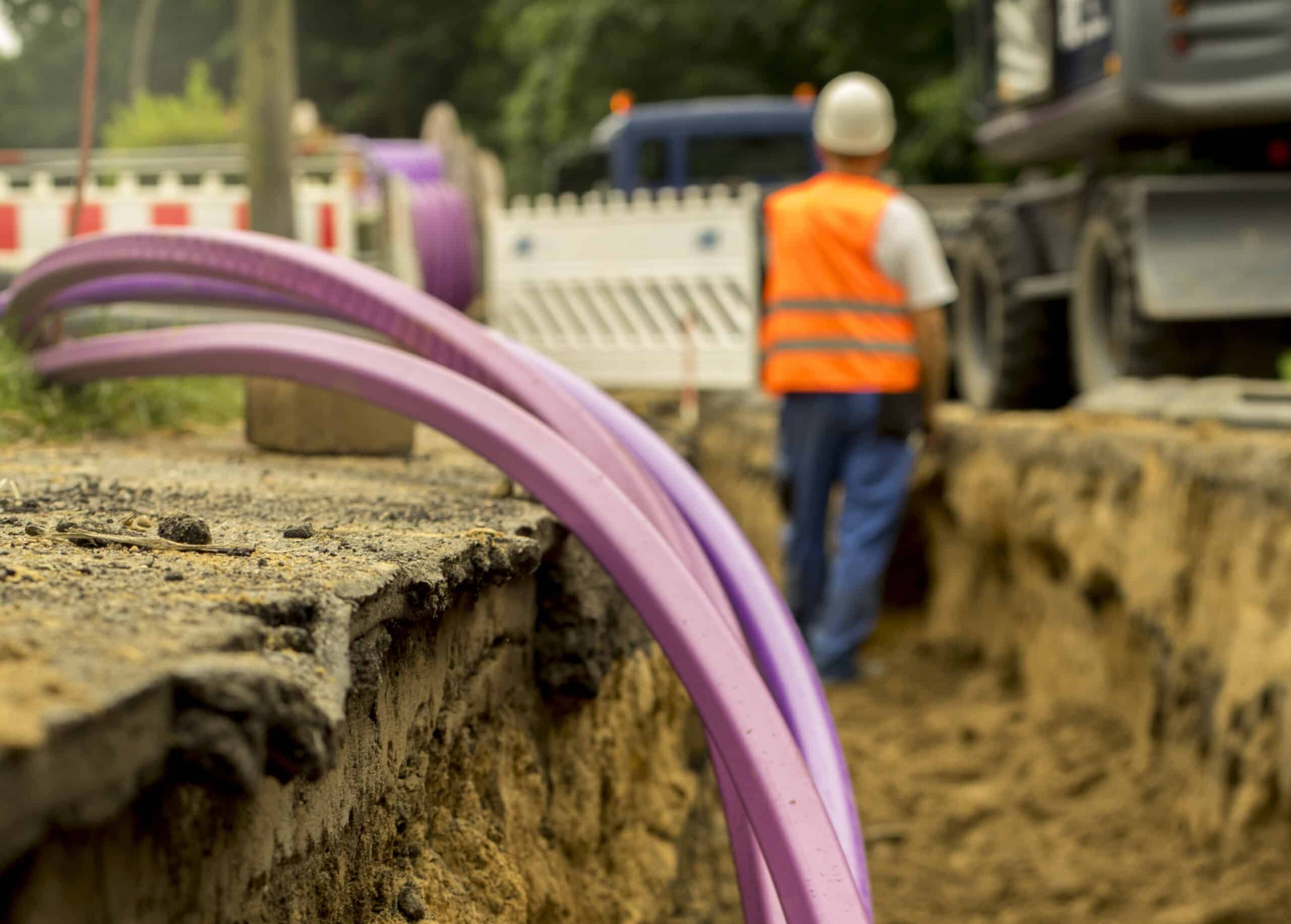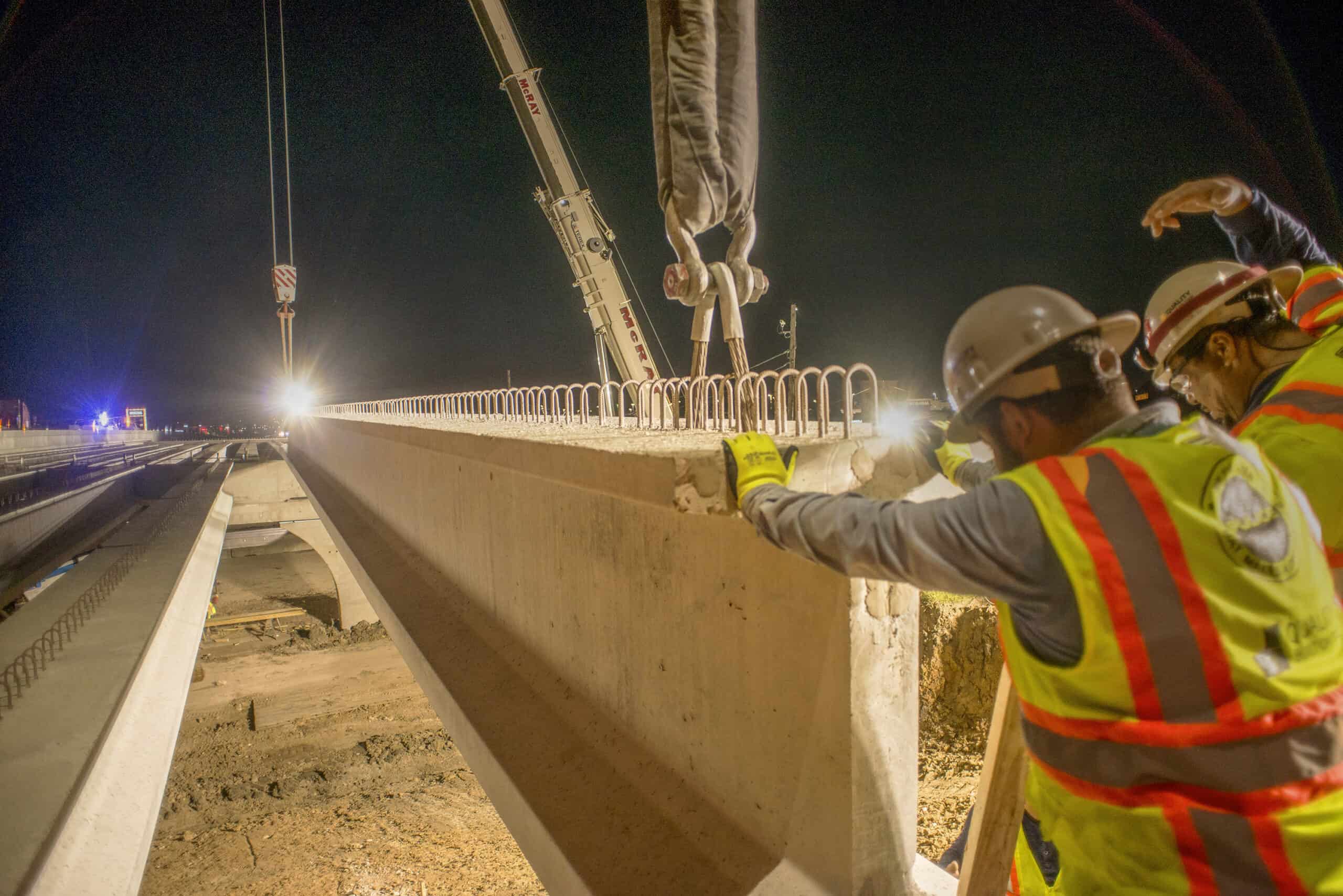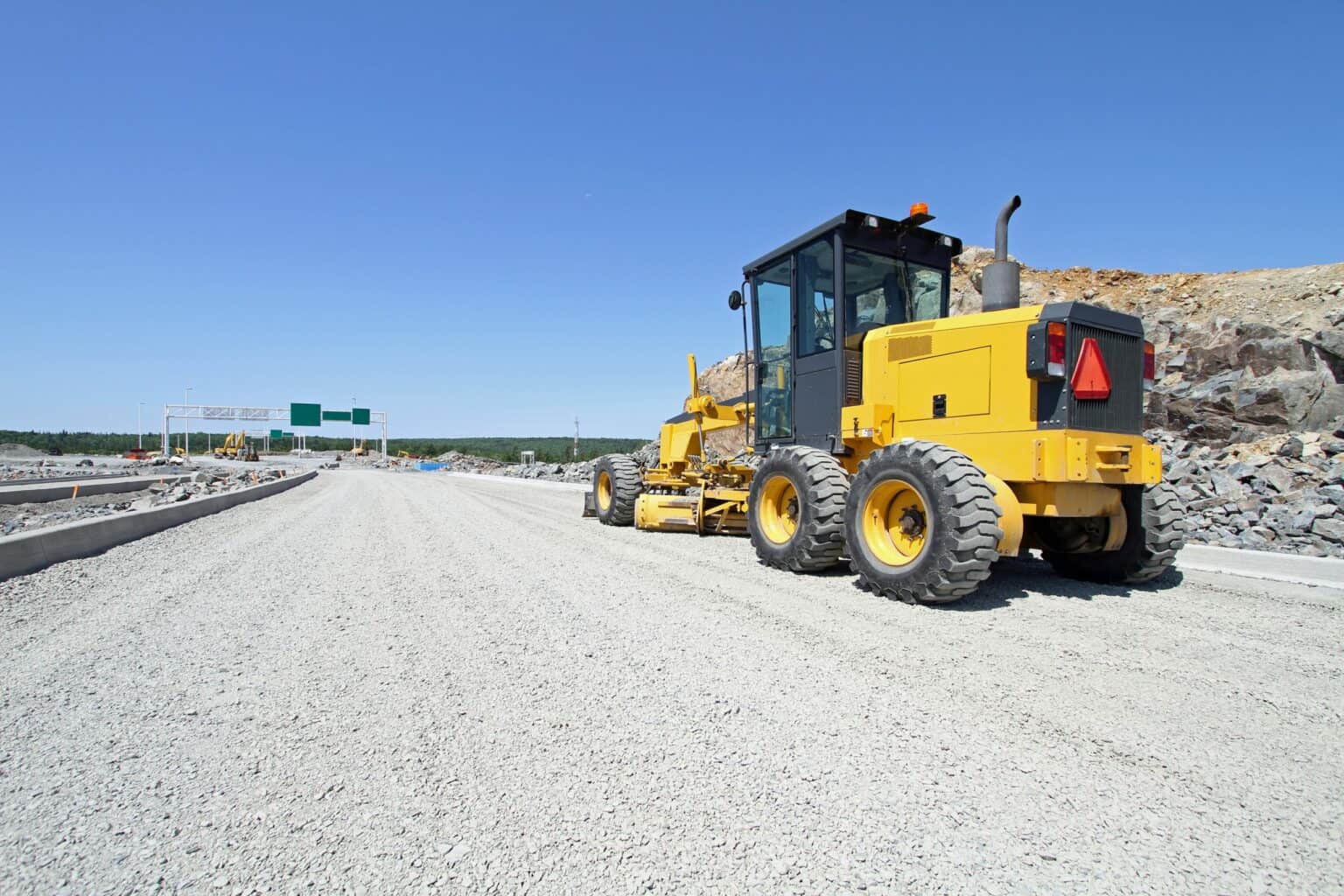After months or even years of careful design work, the construction phase of an infrastructure project can feel like one long struggle to mitigate potential schedule delays. With construction being the most visible phase of an infrastructure project, any delays in the schedule can place tremendous stress on those officials responsible for delivering the project. Avoiding inefficiencies is key to keeping projects on schedule and keeping the public traveling smoothly.
While there’s no accounting for the unexpected, there are a number of common sources of construction delays that, with appropriate upfront planning, can be easily avoided. By involving construction professionals early in the design phase, project teams can better identify areas for implementing greater levels of construction efficiency.
Consider these top four sources of construction inefficiency that a knowledgeable construction partner can help you navigate.
1. Utility Relocation
 Utility coordination, if not implemented early enough, can lead to months of delays and surely derail a construction project schedule. Circumventing a six-month or more delay may mean facing costly redesigns to eliminate the utility conflict. What’s more, this unappealing solution is only possible if the utility infrastructure is moving only a few inches away. Major moves can lead to new problems with other portions of the project.
Utility coordination, if not implemented early enough, can lead to months of delays and surely derail a construction project schedule. Circumventing a six-month or more delay may mean facing costly redesigns to eliminate the utility conflict. What’s more, this unappealing solution is only possible if the utility infrastructure is moving only a few inches away. Major moves can lead to new problems with other portions of the project.
Yet, utility coordination is a necessary part of virtually every construction job. So, how do you avoid this construction efficiency buster?
Beginning utility coordination during the design phase is the best way to identify utilities for relocation before they become an issue during construction. The sooner these conflicts are found, the less impact they will have on the project schedule. By moving utility coordination to the design phase, utilities gain time to put this coordination on their schedule. Agencies can wait to solicit contractor bids on the project until it’s confirmed that the utilities are out of the way.
This efficiency challenge can also be addressed by having a subsurface utility exploration (SUE) process in place early in the design phase. Being able to do subsurface exploration can help verify that no new utilities have gone in even after design phase utility coordination. It’s a useful tool for determining the exact location of the utility.
Finally, contractors may also have the option of resequencing the project phases if utility issues are identified early enough in the construction phase. By building other portions of the project first, contractors can buy utilities time to relocate infrastructure and keep progress going on the project.
2. Permit Applications
From Section 404, DNR permits, railroad right of entry or Army Corps permits, permitting is a part of every construction process. However, some permits can be more challenging to obtain than others. For example, an Army Corps or railroad right of entry permits can take six months to a year to process. If your design team is not considering the permit needed to, say, build a bridge across a small stream several months into construction, then you might as well brace yourself for big delays.
Fortunately, the solution here is simple, even if it’s too often overlooked. To maximize construction efficiency, contractors must prioritize obtaining permits as early as possible. In most instances, it is possible to identify which permits will be required as early as the design phase. In other cases, it’s not so easy. The Army Corps permits mentioned above will likely require plans on how the work will be done. It’s best to confirm that these documents are as complete as possible so that what may be a six-month process is not inadvertently doubled when the permit office reports that information is missing, and the process must begin again.
Working with an experienced construction engineering and inspection (CEI) firm well versed in permitting requirements can give public agencies and municipalities an edge in construction efficiency. While rephasing projects can sometimes help avoid delays due to permitting, the best policy is to have your contractor file permits as soon as they get the job and coordinate with the permitting agency to verify that they have everything they need to move the process forward.
3. Constructability Reviews
A constructability review performed during the design phase by a construction professional can be a valuable asset in making sure that the infrastructure design is buildable. This is the ideal time to check quantities, search the schedule to identify potential impacts to the schedule, or opportunities to optimize phasing and confirm that there’s adequate space to develop a work zone.
Yet, constructability reviews are one of those details that are forgotten, rushed, or omitted to save time. As the project team hurries from design to construction, the constructability review is one of the first pieces to get thrown off schedule. However, in saving time upfront, project teams miss out on an early opportunity to identify time and cost savings opportunities.
A construction engineer is apt to view the plans in a different way than a design professional. While the design team must take a broad view of the project and focus on the overall function when the infrastructure is complete, the construction engineer is considering the nuts and bolts of how to build the project. The constructability review is an opportunity to identify areas where planning wasn’t fully fleshed out or quantity errors were made. By identifying those potential impacts and costs early on, it becomes easier to develop solutions to mitigate them. Having a construction engineer’s perspective before the project progresses to construction provides tremendous value in boosting construction efficiency.
4. Maintenance of Traffic (MOT) Staging
 There’s tremendous potential to improve construction efficiency simply by reorganizing a project’s phasing. Working on multiple stages at the same time, combining several smaller stages into one, or working in a different sequence that makes more sense can be the difference between finishing a project on schedule versus experiencing delays. While these options are typically considered early in the design phase, significant benefits can be realized by involving a construction engineer who can leverage their construction perspective for MOT. The type of equipment to use and available manpower will have an impact on the efficiency of the ultimate MOT staging sequence.
There’s tremendous potential to improve construction efficiency simply by reorganizing a project’s phasing. Working on multiple stages at the same time, combining several smaller stages into one, or working in a different sequence that makes more sense can be the difference between finishing a project on schedule versus experiencing delays. While these options are typically considered early in the design phase, significant benefits can be realized by involving a construction engineer who can leverage their construction perspective for MOT. The type of equipment to use and available manpower will have an impact on the efficiency of the ultimate MOT staging sequence.
The owner’s priorities will also impact staging. For example, in the proposed construction staging of the Harris County Toll Road Authority’s (HCTRA) four direct connectors at the SH 249/SH 99 interchange, HR Green identified 15 separate substages. Initially, the stages were laid out linearly, with each stage completed before the next stage begins. For this project, HCTRA had prioritized time savings, so the construction team identified stages that could be resequenced and constructed at the same time with minimal conflict.
Working on much of the entire job concurrently also affords the contractor flexibility to schedule their crews to perform required tasks more efficiently throughout the project limits while meeting the need for time savings.
On the other hand, if the client had wanted to prioritize cost reductions, the construction team could identify ways to perform work in fewer stages that would reduce the cost of, for example, bringing in more barriers to establish separate work zones.
Save More Time With the Right Partner
Construction efficiency is key in keeping projects on schedule, which in turn can reduce the likelihood of cost overruns. While an experienced contractor can pivot in the face of the unexpected, a truly savvy construction engineering partner will plan upfront to reduce the odds of impacts that derail the schedule.
If you’re looking for a partner to drive your next project to greater levels of construction efficiency, contact HR Green today.


